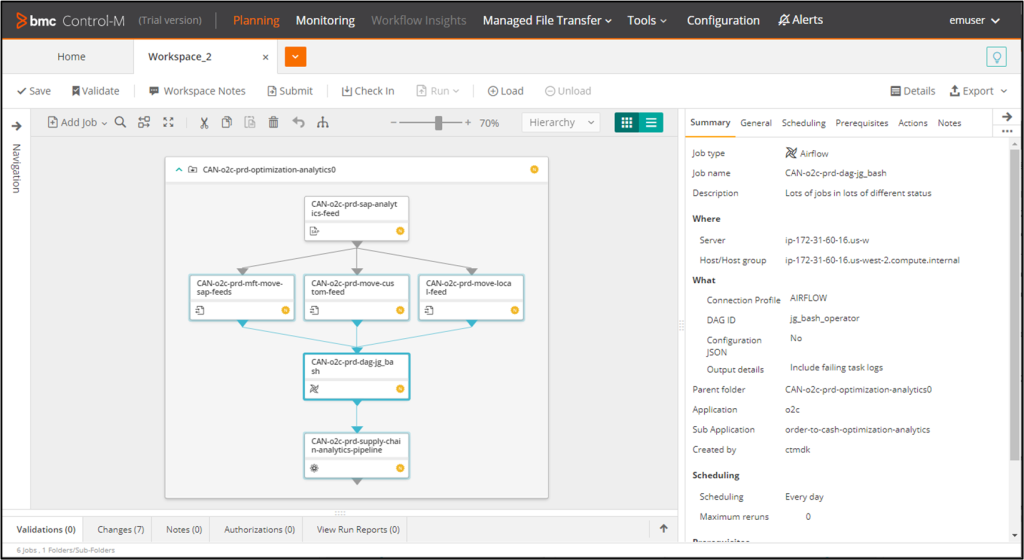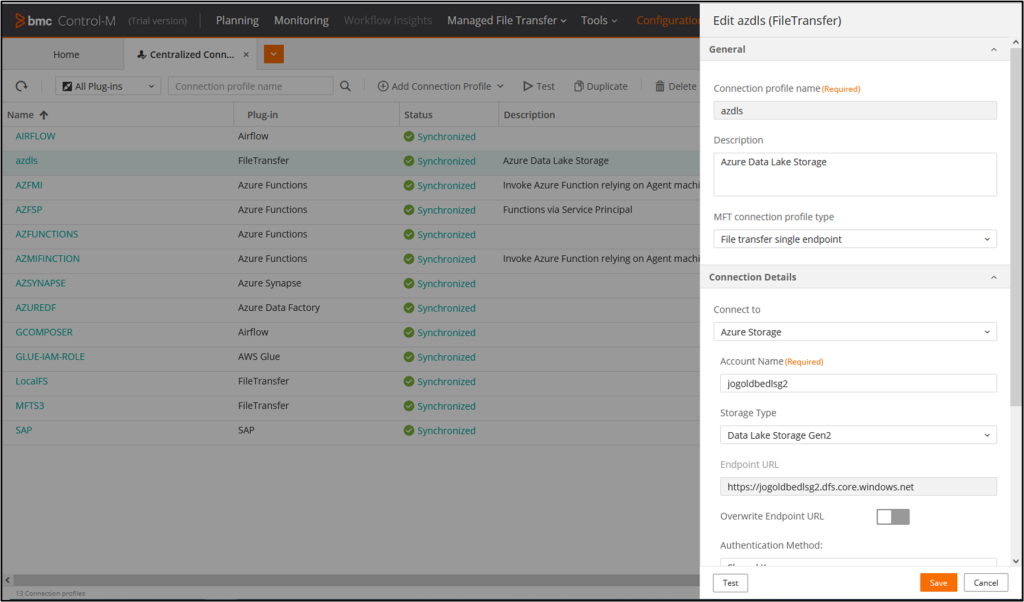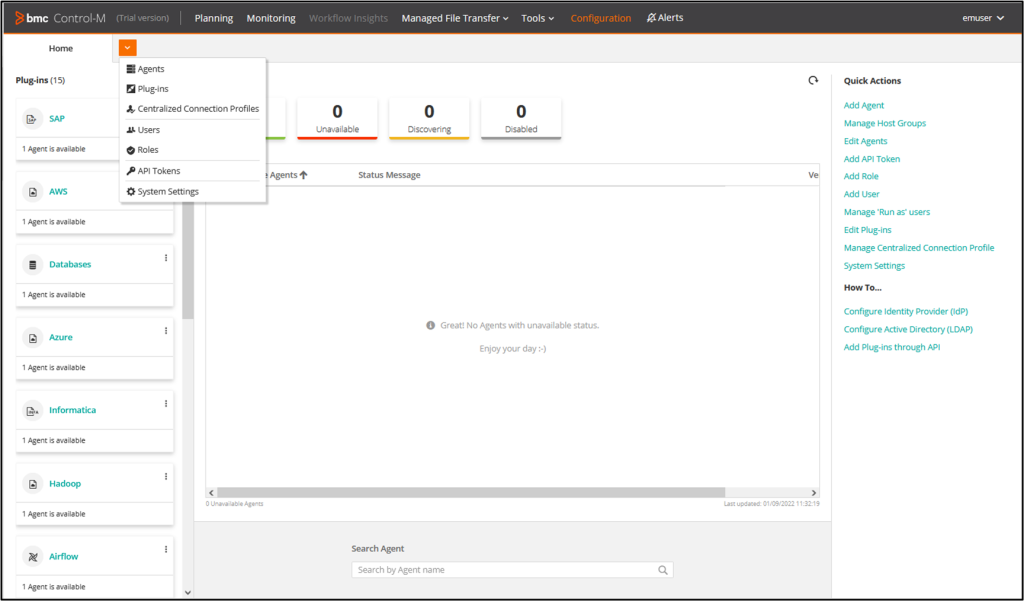Modern business success requires meeting the demands of a perpetually competitive market. As more organizations embrace technology innovation, businesses must work hard to leverage that innovation and improve their business outcomes. To do that, they must identify the challenges and demands of the market.
For example, technology stacks have become increasingly complex. Rather than shy away from dealing with that complexity, companies must build competitive advantages by embracing and exploiting their complex technology stack. In addition, companies are expected to increase the speed and quality of the results they deliver while still using the same resources. That means companies must accelerate their operations to meet that demand. And finally, within the organization, there is a rising demand to eliminate the barrier between IT and the rest of the business. To accommodate this demand, organizations must turn to self-service technology access to give business users the ability to work more freely within their part of the business.
While these challenges may be daunting, a robust application and data workflow orchestration platform can help an organization turn these perceived obstacles into areas of opportunity. That’s why I’m excited to announce Control-M 21 from BMC! With this latest version, IT Operations (ITOps) can strengthen their orchestration framework for business growth through expansion and efficiency and give business users the freedom to work within their designated, secure framework.
Control-M 21 helps ITOps address the challenges of the market by:
- Expanding the orchestration framework
- Increasing operational efficiency
- Improving self-service and collaboration
Expanding the Orchestration Framework
Control-M 21 enables companies to reduce complexity and better orchestrate modern workflows across hybrid and multicloud environments with new data platform and cloud storage integrations. This helps businesses take a data-driven approach, drive business outcomes, and gain competitive advantage.
Key features include:
- Airflow integration—Developers and data engineers can orchestrate their Airflow-based pipelines from within the Control-M orchestration framework, and take advantage of the broader orchestration and advanced capabilities provided by Control-M.

Figure 1. Planning Airflow within Control-M orchestration framework

Figure 2. Monitoring Airflow Directed Acyclic Graphs (DAGs)
- Cloud storage integrations and support for cloud authentications—Users can transfer files to and from further cloud storage repositories (Amazon Web Services (AWS) S3 PrivateLink, Azure Data Lake Storage, and Google Cloud Storage) in one simple step. They can also simplify and enhance security control when running cloud services, by supporting new authentication methods (AWS Identity and Access Management (IAM) roles).
- Continuous monthly releases—The Control-M team at BMC is delivering new integrations in monthly releases, thus expanding the orchestration framework on an ongoing and continuous basis.
Increasing Operational Efficiency
Control-M 21 increases operational efficiency through features that help ITOps eliminate redundant, time-consuming tasks, mitigate risks, and achieve faster-time-to-value.
Key features include:
- Operational enhancements—Users can log into the product faster and more securely with single sign-on through Identity Provider (IdP) SAML 2.0 support. They can also more quickly define application and data workflows, and better automate their execution, by leveraging features such as the ability to reuse existing folders/jobs in workflow definitions, introduce variables in the post-processing logic, and solve dependencies in different ways.
New file transfer capabilities—The ability to orchestrate internal and external file transfers has been significantly enhanced with Control-M 21.

Figure 3. Managed file transfer (MFT) job transferring files from AWS S3 to Azure Data Lake Gen2

Figure 4. Connection profile to connect Azure Data Lake Storage Gen2
Not only can users transfer files to and from cloud storage repositories in one simple step, but they now have better control thanks to new options and post-processing actions. For example, users can create copies of the file they want to transfer when it already exists on the destination host, thus avoiding errors or unwanted overrides. Security has been increased with new and upgraded algorithms, and administrators now have a new level of security control, with the ability to define internal allowed and blocked user lists. Finally, the MFT/E user experience has been enhanced and a new MFT web interface helps internal users speed up one-time file transfers in a self-service fashion, which frees up ITOps from the burden of ad-hoc remediation requests.
- Administration facilities—Administrators can now reduce the time dedicated to installation and configuration actions. For example, they can create multiple MFT/E sites with a single MFT/E installation, and eliminate redundant, time-consuming actions with Centralized Connection Profiles. They can also automate the conversion from old local connection profiles to new centralized connection profiles using out-of-the-box conversion utility and reduce conversion errors.
Improving Self-service and Collaboration
Control-M 21 also enhances freedom within the orchestration framework. Now, ITOps can empower business users, developers, and engineers with personalized, secure, self-service access to the resources and information they need, delivered through the interfaces with which they are most familiar. That means ITOps can then delegate more tasks to other users while more easily defining the organizational standards and best practices they must adhere to for disruption-free collaboration.
Key features include:
- Framework for collaboration and control—Employees within the organization have more freedom to use the technologies of their choice. Developers and engineers can complete their tasks without submitting service requests. They can be given full authority to manage host groups and can launch jobs by embedding scripting in their preferred program language, without having to access the local machine. The organizational standards to which they must adhere can now be defined more easily and quickly by ITOps through the new site standard policies.
- Enhanced graphical user interface (GUI) experience—Business users can access more Control-M resources, information, and capabilities through an enhanced GUI. Examples include the possibility to manage folders, users, roles, and access new reports.

Figure 6. Configuring users and roles from the web interface
- Improved developer and engineer experience—Developers’ and engineers’ experiences are improved with easier collaboration with ITOps, through JSON import/export. They can deploy changes easier, faster, and at the subfolder/job level with a new Automation API, and access more Control-M resources, information, and capabilities through ongoing enhancements.
It’s vital to stay ahead in today’s highly competitive market. Control-M 21 can help you modernize by expanding your orchestration framework, increasing operational efficiency, and improving collaboration within your business.
For more information about Control-M 21, check out the “what’s new” page to see a complete list of features.
These postings are my own and do not necessarily represent BMC's position, strategies, or opinion.
See an error or have a suggestion? Please let us know by emailing blogs@bmc.com.






